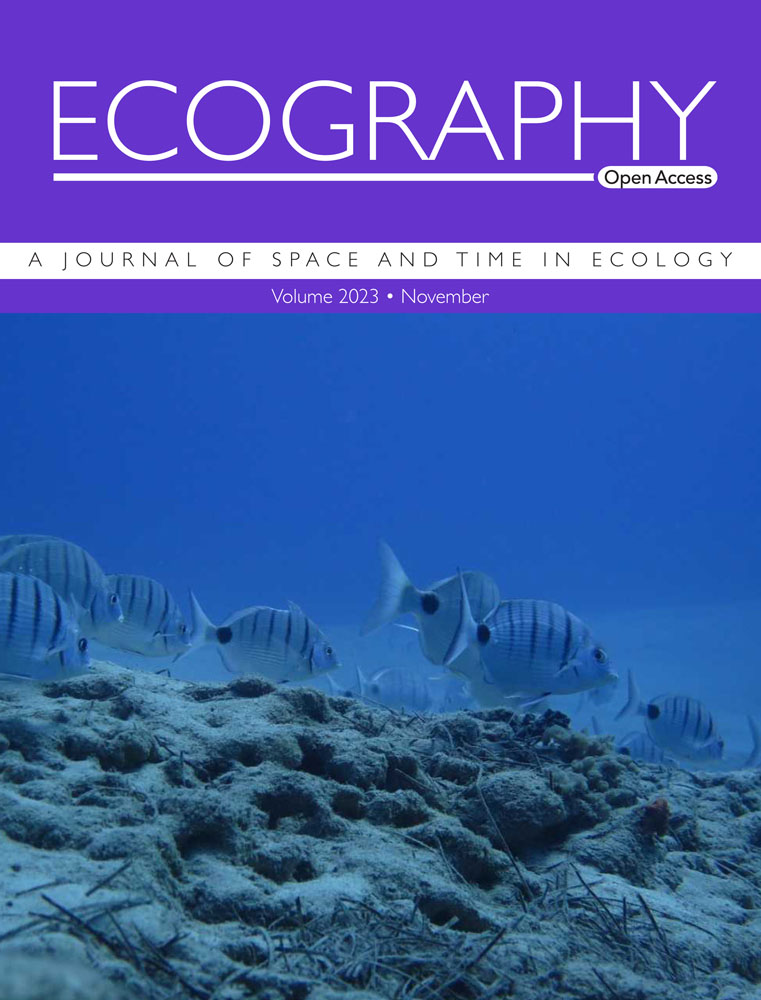Marcescence and prostrate growth in tree ferns are adaptations to cold tolerance
IF 5.4
1区 环境科学与生态学
Q1 BIODIVERSITY CONSERVATION
引用次数: 0
Abstract
Cold tolerance strategies in plants vary from structural to biochemical permitting many plants to survive and grow on sites that experience freezing conditions intermittently. Although tree ferns occur predominantly across the tropics, they also occur in temperate zones and occasionally in areas that experience sub‐zero temperatures, and how these large ferns survive freezing conditions is unknown. Many temperate tree fern taxa are marcescent – retaining whorls of dead fronds encircling the upper trunk – or develop short or prostrate trunks, possibly to insulate against frost damage to their trunks and growing crowns. We asked the following questions: 1) do global growth patterns and traits of tree ferns respond to freezing conditions associated with latitude and elevation, 2) do growth patterns of tree ferns in New Zealand vary along a temperature‐related gradient, and 3) do marcescent tree fern skirts insulate the growing crown from sub‐zero temperatures? To establish what morphological adaptations permitted the Cyatheales to occur in biomes that experience intermittent sub‐zero temperatures and frost, we 1) reviewed the global distributions of these structural and morphological traits within the tree ferns (Cyatheales); 2) assessed the patterns of tree fern marcescence, and other traits potentially associated with cold tolerance (no trunk, prostrate, short‐trunked) of nine taxa of the Cyatheales along environmental gradients across New Zealand; and 3) conducted a field experiment to assess the thermal insulation properties of tree fern marcescent skirts. We identified significant trends among growth forms, marcescence, and environmental gradients consistent with our hypothesis that these are adaptations to tolerate cold. Our field experiments provide quantitative evidence that marcescent skirts have a strong insulating effect on tree fern trunks. The Cyatheales have evolved several strategies to protect the pith cores of their trunks from extreme cold temperatures in temperate forests allowing them to capture niche space in environments beyond the tropics.求助全文
约1分钟内获得全文
求助全文
来源期刊

Ecography
环境科学-生态学
CiteScore
11.60
自引率
3.40%
发文量
122
审稿时长
8-16 weeks
期刊介绍:
ECOGRAPHY publishes exciting, novel, and important articles that significantly advance understanding of ecological or biodiversity patterns in space or time. Papers focusing on conservation or restoration are welcomed, provided they are anchored in ecological theory and convey a general message that goes beyond a single case study. We encourage papers that seek advancing the field through the development and testing of theory or methodology, or by proposing new tools for analysis or interpretation of ecological phenomena. Manuscripts are expected to address general principles in ecology, though they may do so using a specific model system if they adequately frame the problem relative to a generalized ecological question or problem.
Purely descriptive papers are considered only if breaking new ground and/or describing patterns seldom explored. Studies focused on a single species or single location are generally discouraged unless they make a significant contribution to advancing general theory or understanding of biodiversity patterns and processes. Manuscripts merely confirming or marginally extending results of previous work are unlikely to be considered in Ecography.
Papers are judged by virtue of their originality, appeal to general interest, and their contribution to new developments in studies of spatial and temporal ecological patterns. There are no biases with regard to taxon, biome, or biogeographical area.
 求助内容:
求助内容: 应助结果提醒方式:
应助结果提醒方式:


